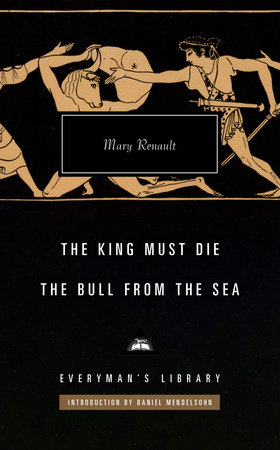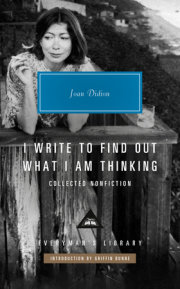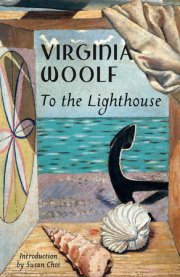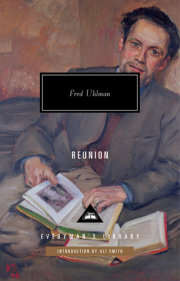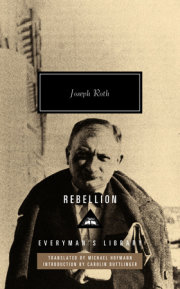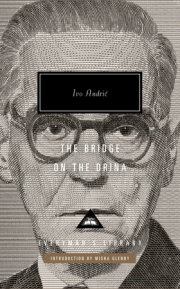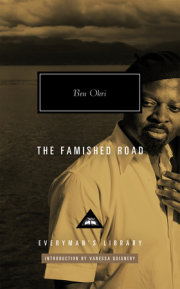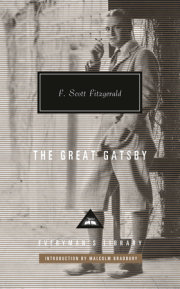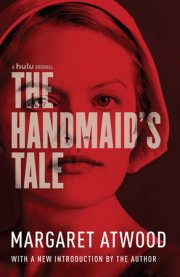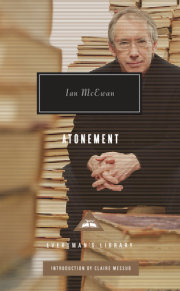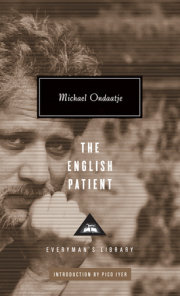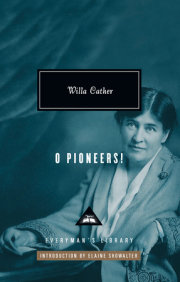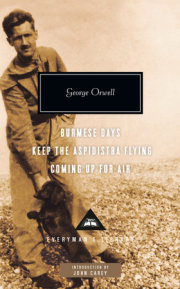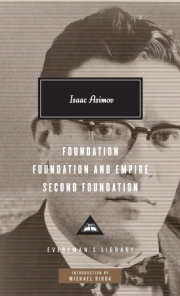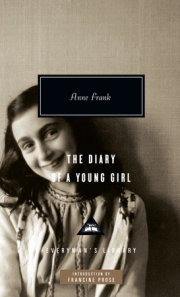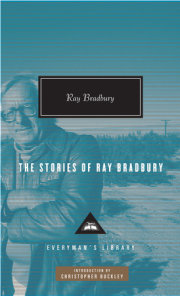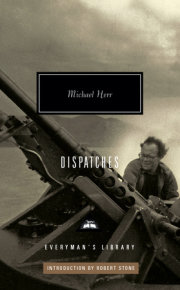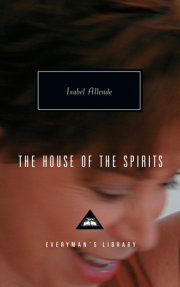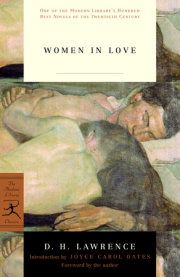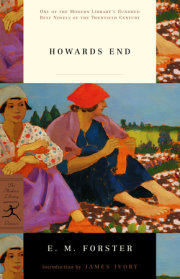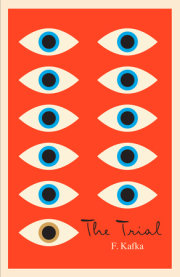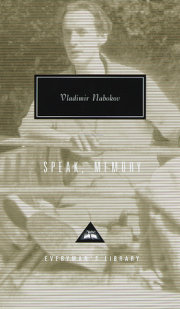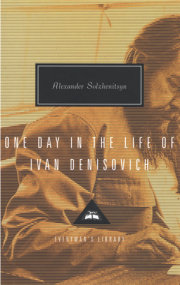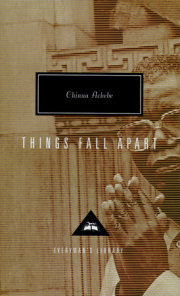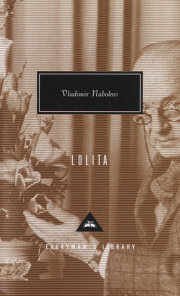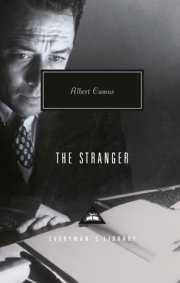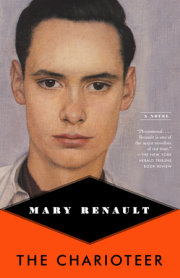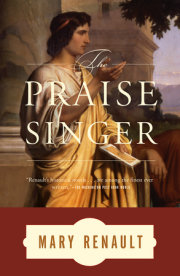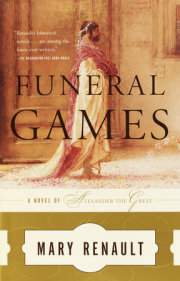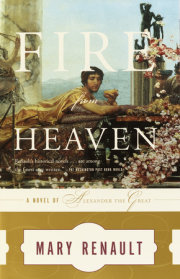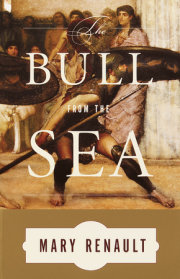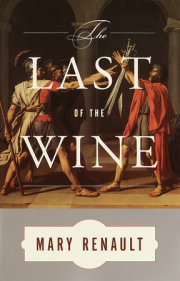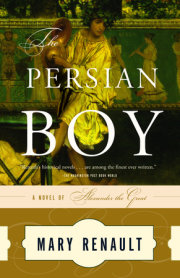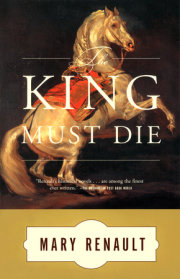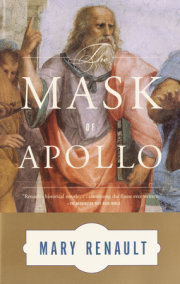from the INTRODUCTION by Daniel Mendelsohn
When, in the middle of the 1950s, Mary Renault sat down to
write
The King Must Die, her novelistic retelling of the myth of the
Athenian hero Theseus, she was facing a challenge unlike any
other she had previously set herself.
Nothing that Renault had done before that decade suggested
that she would become one of the twentieth century’s most
esteemed authors of historical fiction, whose novels of Ancient
Greece, admired for both their scholarly rigor and literary texture,
would sell millions of copies worldwide. Between the late
Thirties and mid-Fifties, the author – who was born in London
in 1905 and emigrated to South Africa after World War II –
had published a number of crisply intelligent contemporary love
stories with trenchant themes, among which the most persistent
was the conflict between individual choice and personal happiness,
on the one hand, and social conventions and historical
circumstances, on the other. This theme was, perhaps, inevitable.
Renault was a lesbian; two of her contemporary novels,
The Friendly Young Ladies, published in 1943, and
The Charioteer,
which came out a decade later, treat the subject of homosexuality
explicitly.
Despite a lifelong fascination with all phases of the Greek
past – by the time she finished high school she had read all of
Plato, and during her university days at Oxford she repeatedly
visited the Ashmolean to gaze at a statuette of a Minoan bulldancer
– Renault was nearing fifty by the time she decided to set
a novel in Ancient Greece. The inspiration, she later recalled,
came during a boat trip she took along the East African coast in
the early 1950s with her partner, Julie Mullard. She was reading
the Greek historian Xenophon’s memoir of his days as a pupil of
Socrates, and the book sparked her curiosity about the members
of Socrates’ circle and their individual characters. “What must
it have been like?” she remembered wondering. “And I thought
I must write a book about it.”
The result of that spur to her imagination was the publication,
A portrait of Athens during the Peloponnesian War, in the latter
part of the 400s BCE, the book, cast as the memoir of an (invented)
student of Socrates, moved easily between grand historical
set pieces and lively recreations of Socrates’ dialogues, the
whole being enlivened by a love story between the narrator and
another young man. (By setting her fictions in Ancient Greece,
a society in which male–male relationships were an accepted
convention, Renault was finally able to write about homosexuality
in a context that required neither excuses nor justifications.)
The novel was an enormous success both critically and commercially;
Renault’s attention to fi ne-grained historical detail won
her the admiration not only of other serious historical novelists
– Patrick O’Brian, the author of the Aubrey–Maturin novels,
dedicated one of them to her – but of classical scholars, too. To
her immense research Renault brought something that most historians
don’t have: a novelist’s imagination and an intuitive feel
for the kind of detail that conveys, more than even the most solid
facts can, the vivid reality of characters and settings. She went as
far as to reproduce, in her prose, the syntax of Classical Greek,
which is heavy with participles. “He, hearing that a youth called
Philon, with whom he was in love, had been taken sick, went at
once to him; meeting, I have been told, not only the slaves but
the boy’s own sister, running the other way.” Such minute attention
to stylistic detail gives the novel the impression of having
been translated from some lost Greek original.
For the quarter century following the publication of
The Last of the Wine, Renault produced a steady stream of critically acclaimed
and bestselling fictional evocations of Greek antiquity.
Like
The Last of the Wine – and as with the classically-themed
novels of Renault’s contemporaries Marguerite Yourcenar (
The Memoirs of Hadrian) and Robert Graves (
I, Claudius), authors to
whom she was often compared – these novels often took the
form of first-person narratives by either real or invented figures,
a technique that efficiently drew modern readers into remote
times and milieus.
The Mask of Apollo (1966), told from the point
of view of an Athenian actor who gets mixed up in political intrigues
surrounding Plato between the 380s and the 350s BCE,
gave Renault a vehicle for expressing what her biographer,
David Sweetman, called a “lifelong passion” for the theater;
The Praise Singer (1978), narrated by the sixth-century BCE poet
Simonides of Ceos, is set at the moment when Athens overthrew
her tyrants and established the democracy. Perhaps her best-known
work is a trilogy of novels about Alexander the Great:
Fire from Heaven (1969),
The Persian Boy (1972), and
Funeral Games (1981).
The second of these is narrated by a figure who appears at the
margins of ancient biographies of Alexander, a Persian eunuch
who had been the pleasure-boy of the emperor Darius III, and
who, after Alexander’s victory over the Persians, became the
lover of the Macedonian conqueror. By narrating Alexander’s
conquests through the eyes of someone from another culture,
Renault allows us to see this familiar figure afresh.
All that, however, was far in the future when Renault began
The King Must Die. The daunting challenge posed by the new
book was quite different from the one she had faced in writing
The Last of the Wine. In that book, she had had to use her imaginative
skills to put flesh and bones on historical events that
had been recorded and elaborated by a hundred generations
of historians, starting with the classic accounts of Thucydides
and Xenophon, both of whom were eyewitnesses to many of the
events of the Peloponnesian War. With Theseus, she faced, in
a way, the opposite problem: she had to find a way to ground
the fantastical flights of myth so that her legendary character
and his remarkable doings would feel historical – would feel,
somehow, real.
For Renault, Theseus, the legendary hero-king of Athens
who freed the city from servitude to its Cretan overlords, was
a natural choice of protagonist. Throughout her life, the author
idolized and identified with boyish adventure heroes with interesting
flaws, an identification that found fullest expression in her
trilogy about Alexander. (She remarked that, while writing the
second volume, she felt that she had become one with her protagonist.)
There was, too, that fascination with the civilization of
Minoan Crete going back to her Oxford days. And Renault had
great feeling as well for the culture of Athens, the ancient city-state
that provided the setting for many of her novels. Theseus,
the Athenian hero
par excellence, who famously penetrated the
secrets of the Labyrinth to slay the Minotaur, exemplified the virtues
which that city claimed for itself (bravery, glamor, sympathy
for the oppressed) as well as its vices (a tendency to nudge itself
into others’ business, known as
polypragmosyne¯, “busybodiness,”
and a taste for troublemaking). Already in the
Iliad, a character
recalls Theseus as belonging to an earlier generation of heroes,
“the strongest ever bred”; he appears in a number of Greek
tragedies as a ruler who embodies the city’s noblest traits, showing
kindness even to the aged, accursed Oedipus in Sophocles’
Oedipus at Colonus and defending the rights of the mothers and
widows of defeated soldiers in Euripides’
Suppliant Women. Later
mythographers, those ancient Greek and Roman collectors of
and commentators on the old tales, were aware of a number of
accounts of the hero’s life now lost to us; fortunately Plutarch,
who flourished late in the first century CE and wrote a
Life of Theseus, had access to these. His account is the basis for much of
Renault’s narrative in both
The King Must Die and its sequel,
The Bull from the Sea.
An astonishing range of stories covered the whole of the hero’s
life. He was said to have been simultaneously the son of Aegeus,
a king of Athens’ most ancient royal line, the Erechtheids, and
the son of the sea-god Poseidon himself. (His mother, Aethra,
princess of the nearby city of Troizen, slept with both on a
single night.) A series of tales, reminiscent of those told of the
young King Arthur, recounted how he proved his paternity as
a youth by digging up certain tokens left in a secret place by
his mortal father, whose court in Athens then accepted him as
heir. (By this point Aegeus has taken as his mistress none other
than Medea, who makes a fascinating cameo appearance in
the fi rst of Renault’s Theseus novels.) To the young prince was
attributed an expansion and consolidation of Athenian power
and the establishment of law and justice throughout Attica, the
region around the city, which he brought under a single coherent
rule. Many of the myths about him indeed celebrated exploits
by which he rid his kingdom of various kinds of predator both
human and animal: the bandit Periphetes, who murdered his
victims with a huge club which later became Theseus’ own
emblem, often depicted in the visual arts; an enormous sow that
terrorized a district called Crommyon; and so forth.
The King Must Die covers much of this material, all leading
up to a climactic retelling of the most famous of Theseus’ early
exploits: his journey to Crete and his slaying there of the Minotaur,
the half-human, half-taurine monster who dwelled at the
heart of the Labyrinth, the maze designed by the great inventor
Daedalus. In the myth, the young prince goes to Crete as part
of the periodic tribute of seven youths and seven virgins that
Athens had to provide to her overlords: on arrival, the boys and
girls would be devoured by the monster. But Theseus wins the
heart of the Cretan princess Ariadne, daughter of King Minos,
who helps her lover to kill the Minotaur by threading a string
through the maze that leads to the monster’s lair.
Behind these and other myths about the hero’s youth, it is
possible to discern the dim outlines of real historical events.
Scholars today believe that Theseus might be based on a
memory of a heroic ruler (again, like King Arthur) who lived at
the end of the Bronze Age, around 1200 BCE, when the palace
cultures of Mycenae and Minoan Crete collapsed, and who rid
the land of bandits and villains and established a remote ancestor
of the historical city. (The political consolidation of Athens
with neighboring territories that was attributed to Theseus was
known as the
synoikismos; it was celebrated in classical times at
a grand annual festival known as the
Synoikia.) In
The King Must Die, Renault assumes the truth of that hypothesis: her Theseus
is an ambitious young prince who, whatever his secret dreams of
being Poseidon’s son, has a pragmatic political mind.
To underpin this realistic presentation of her hero, the author
found a number of ingenious ways to account for some of the
more fantastical elements of the myth, suggesting how real-life
details might have grown into the exaggerations of legend. In
her novel, there is no half-human, half-bull Minotaur: we learn
that the Cretan king wears a ceremonial bull’s-head mask, and
that “Minotaur” is a ritual title given to the crown prince – in
the novel, an illegitimate son of Minos’ queen who is eyeing the
throne himself, and whose looks have something bullish about
them. (“He was very dark . . . greenish-dark like the ripe olive;
and as thick as a bullock. His neck was no narrower than his
head . . . his nose was broad, with wide black nostrils.”) And
Renault, following a number of scholars, suggests that the annual
tribute of youths and maidens from Crete’s vassal-states is intended
to “feed the monster” not literally but figuratively: that
is, to supply fresh athletes for the bull-dance, the sport – part
entertainment, part ritual – depicted on the walls of the palace
of Knossos, where brilliantly-colored paintings show athletes
who are at once
toreros and acrobats somersaulting and vaulting
off the backs of charging bulls. The statuette Renault visited as
an undergraduate was of one such dancer.
The myths of Theseus’ early life end, as does
The King Must Die, with the triumphant hero’s return home. After Theseus
has slain the Minotaur, he and his band sail for Athens, where
his father, the elderly Aegeus, anxiously scans the horizon: for,
on departing, Theseus had promised that, if he survived his
Cretan ordeal, his ship would run down its black sail and hoist
a white sail meant to symbolize life. Stopping first on the island
of Naxos, where Theseus abandons Ariadne (who goes on to
become the bride of the wine-god, Dionysus), the young prince
sails into Attic waters – forgetting, however, to change his sail.
Thinking that his son has died, Aegeus jumps into the sea from
the promontory of Cape Sounion, and Theseus enters Athens
as king.
The Bull from the Sea, published in 1962, covers a number
of incidents from Theseus’ later life as king of Athens. These
tales, while all exemplifying the hero’s valor and dash, are more
varied and harder to tie into a single theme or narrative trajectory.
(Most critics agree that
The King Must Die is the stronger
of the two novels.) There is Theseus’ slaying of the gruesome
villain Procrustes (from whom we have our adjective “procrustean”:
he notoriously forced his victims to fi t into his guest-bed
by either stretching them out, if they were too short, or amputating
their extremities, if they were too tall); his trip to Pontus,
on the southern shore of the Black Sea, where he conquers the
warrior-women known as Amazons and wins their queen, Hippolyta,
who bears him a son, Hippolytus; his great friendship
with Pirithous, king of the Lapiths, at whose wedding the half-human,
half-horse Centaurs get drunk and attempt to rape the
bride, wreaking havoc on their hosts before the Lapiths, led by
Pirithous, Theseus and – in Renault’s account – Hippolyta,
slaughter them. (The battle is commemorated in the sculptural
decoration of that greatest of all Athenian buildings, the Parthenon.)
In these episodes, as elsewhere, Renault, while sensitive
to the eerie, god-inhabited thought-world of her characters, finds
a way to account naturally for the myths’ wilder elements: the
Centaurs, for instance, are no more than a particularly hirsute
tribe with a penchant for riding very shaggy ponies into whose
thick coats the riders’ legs disappear, making it seem as if rider
and mount were one being.
The centerpiece of
The Bull from the Sea is its adaptation of
a well-known tragic tale that was made famous fi rst in Euripides’
drama
Hippolytus and, millennia later, in Racine’s
Phèdre:
Theseus’ queen Phaedra, the forsaken Ariadne’s younger sister,
conceives an illicit passion for his son Hippolytus. In the Greek
version of this familiar folk-tale motif – one thinks of the biblical
story of Potiphar’s wife – the young Hippolytus, who has dedicated
himself to the chaste cult of the virgin huntress Artemis,
rejects the advances of the older woman, who in her rage and
shame accuses him of having raped her. Euripides’ version adds
an anguishing twist: his Hippolytus has taken an oath never to
reveal what transpired between him and his stepmother, and
hence is unable to defend himself when he is confronted by his
enraged father. Convinced of his son’s guilt, Theseus calls upon
Poseidon to curse Hippolytus, and the youth is killed after his
chariot crashes, an accident caused when a giant bull, hurled
onto shore by the crest of a wave sent by the sea-god, terrifies
his horses. Only too late does Theseus learn the truth. In the
plays of both the Greek and French dramatists, the focus is on
the erotically possessed Phaedra and the conflict between her
lust and her shame, and Theseus is a minor character. Readers
familiar with those versions will be fascinated by Renault’s
hand ling of the story, in which we experience the drama from
the wrenching perspective of the uncomprehending king.
After losing his wife and son, Renault writes in a postscript to
these novels, “Theseus’ luck forsook him.” Eventually, the aged
king leaves the city that he made great and takes refuge on the
island of Skyros. In most versions of the myth, he dies, like his
father, in a fall from a cliff – either an accident or through the
perfidy of his host. Either way, an inglorious end to an astonishing
career.
The achievement of Renault’s novels is to have taken this grab-bag
of legends and fashioned from them a coherent narrative
and a convincing work of fiction – to have excavated, as she puts
it in her Author’s Note, the “human actualities” beneath the
“fairy tale gloss.”
. . .
*
Copyright © 2022 by Mary Renault; Introduction by Daniel Mendelsohn. All rights reserved. No part of this excerpt may be reproduced or reprinted without permission in writing from the publisher.

